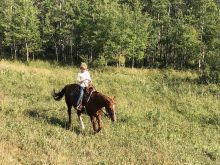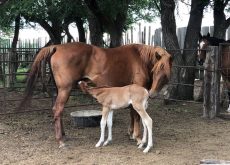A couple we’ll call Harry, 50, and Margie, 49, own three sections in central Manitoba. They have a mixed farm operation producing hay and grains. They estimate their farm, machinery and inventory is worth $3.5 million. They need $84,000 a year after tax to maintain their way of life. The problem is getting that money from their operation without going to the bank.
Margie has a town job that pays her $30,000 a year before tax. Therefore, the couple needs $54,000 a year from the farm. They have three children ages 15, 13 and 12. The couple’s issue is financial efficiency — and it can be resolved with financial planning.
Margie and Harry approached Colin Sabourin, a certified financial planner with Harbourfront Wealth Management in Winnipeg. Sabourin notes the couple’s farm corporation owes Harry $100,000 from a shareholder loan. He moved land into the corporation five years ago.
Read Also

Gentle treatments for pain in the neck
Heading toward year-end, people unknowingly tense up against the cold and busyness, causing neck pain that can often be treated with appropriate support and gentle mobility, athletic therapist Kathlyn Hossack says.
Harry can take that money out of the corporation tax free. His present income, $60,000 from the corporation, plus Margie’s salary at $30,000 less $15,261 taxes payable, which is net $74,739, plus Canada child benefit, $8,923, leaves them with $83,662.
He can do better, Sabourin suggests. Harry can have the corporation pay him a salary of $12,000 and then make up the difference with a shareholder loan. That process would add his $12,000 salary to Margie’s $30,000 salary, a deduction of $2,772 taxes payable, which is net $39,228, then add the increased Canada child benefit of $15,960 and a $28,474 shareholder loan repayment to arrive at a final income with taxes paid of $83,662.
This calculation shows they would save $12,489 on annual taxes based on Harry’s reduced salary. That would cause the Canada child benefit to increase by $7,037 per year resulting in a $19,526 annual gain after tax.
A good solution?
Is this an optimal solution? Yes, Sabourin suggests, because if Harry took a zero salary, he would be forfeiting the approximately $12,000 every taxpayer can earn tax free, due to the personal non-refundable tax credit. If he did drop his income to zero, he’d gain $1,700 from the Canada child benefit, but that would not compensate for the income he would not declare. Moreover, the clock is working against Harry and Margie when they no longer have children under the age of 18. After that time, Harry can go back to taking a full salary.
In the proposed scenario using the Canada child benefit, $19,526 is saved by the farm corporation. The farm pays Harry $12,000 plus a $28,474 shareholder loan repayment, total $40,474. The $19,526 can be retained by the farming corporation to pay off debt and/or finance growth.
This strategy only works while the children are under 18. After that, the Canada child benefit payments stop. The $100,000 loan can sustain only three entire $28,474 loan repayments totalling $85,422 and a remainder of $14,578. However, the eldest child, 15, will still be under 18, so the plan will work to exhaust the $100,000 shareholder loan, Sabourin notes. At that time, Harry would have to raise his salary to maintain his way of life.
The couple’s present cost of living is modest but is likely to rise as the kids grow up and need sports gear, more clothing and occasional travel. Harry and Margie need to plan for a higher income level. Therefore, it may make sense to make additional withdrawals from the shareholder loan they have available to them. They could put this money aside today into their personal accounts for future expenses.
Retirement is several decades in the future. In terms of a saving strategy, Harry, with a higher income, should build registered retirement savings plan (RRSP) accounts and take deductions for contributions. He can designate contributions go to Margie’s spousal RRSP, for she is likely to be in a lower tax bracket in retirement.
Both should contribute to tax-free savings accounts (TFSAs). The current limit is $81,500 per person including any prior contributions. TFSAs produce no immediate tax savings, but they do provide a tax-immune base for subsequent investment asset appreciation. The couple has no TFSAs now.
For testamentary purposes, Harry and Margie can consider whole life insurance either to fund some retirement costs or to provide money for either child who may not want to farm. Whole life rises in cost with age, but it can be seen as a form of guaranteed savings. If the parents maintain their life insurance to age 70, they can withdraw cash value for retirement costs or keep the policy as a benefit for any child if they do not inherit the value of the farm and farm corporation.















